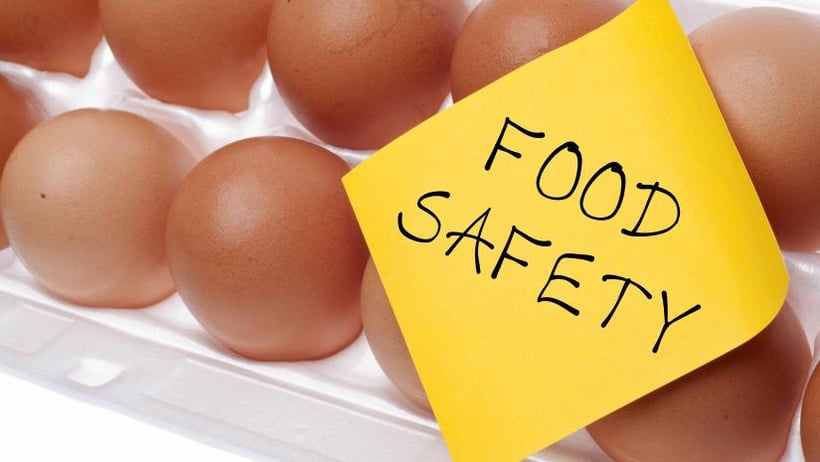
In the next installment in a series on food contamination, we’re examining an often overlooked area of risk: the refrigerator. As a Food Handler or Food Supervisor, you may not think of the fridge as a likely source of food contamination, especially since there are multiple shelves and the food is all kept at a cold, food-safe temperature. But if safe food storage procedures aren’t followed, it’s just as easy for contamination to occur in the refrigerator as with any other spot in the kitchen.
What is Food Contamination?
In order to understand how contamination occurs in the fridge, it’s important to understand exactly what contamination means. Food contamination occurs when a food is spoiled by another substance, rendering it unsafe for customers to consume. There are three types of contamination:
- Physical contamination, which is spoilage due to the presence of an object in the food
- Chemical contamination, which is when food is spoiled by the presence of a chemical agent like a cleaner or sanitizer
- Biological contamination, which refers to the presence of a harmful bacteria, virus or organic matter, like salmonella
Additionally, food contamination can occur through the transfer of harmful bacteria or substances from one food to another. This is known as cross-contamination. Cross-contamination can occur from one food to another, from a person to food, or from equipment to food. No matter the type of transfer, the food item is rendered unsafe to eat. For example, if a food is contaminated with bacteria that cause food poisoning (consider raw poultry) and spreads it to other foods, equipment, work surfaces or hands.
Contaminated food is a serious health risk, as food allergens, germs, foreign objects or chemicals can all make customers ill or cause choking hazards or injuries. In a commercial kitchen with so many moving parts and people, it is extremely easy for food contamination to occur.
Refrigeration Contamination Examples
- A cracked container containing peanut stir-fry sauce leaks onto another food item in the fridge. That other food item is now contaminated with peanut allergens. Allergens are not destroyed during the cooking process, so if that food item is prepared and served to a customer with a peanut allergy, a life-threatening allergic reaction could result.
- An employee stumbles and breaks a plate in the walk-in cooler. There are uncovered containers of pre-cut fruits on the bottom shelf of the refrigerator. If even a tiny shard of glass lands in the fruit, and it’s served to a customer, it could cause a serious injury.
- Many types of bacteria and other harmful microorganisms can survive and even grow in the refrigerator. (For example, listeria monocytogenes bacteria grows at temperatures as low as 0°C). A tray of ground beef is stored above a container of lemon pudding. Juices from the beef drip onto the ready-to-eat dessert. If the contaminated pudding is served to a customer, they could get seriously ill with food poisoning.
- An employee is cleaning the refrigerator using a chlorine bleach solution in a spray bottle. A box of fresh produce is uncovered on one of the shelves near where the employee is cleaning. An invisible layer of chemical solution now contaminates the produce, and it could cause a customer to get sick.
The examples above demonstrate just how easy it is for contamination to occur in a refrigerator if safe food handling procedures are not followed.
Preventing Contamination in the Fridge
To prevent contamination in the refrigerator, abide by these rules and best practices, along with your Food Safety Plan:
- Thoroughly wash your hands before handling and preparing food stored in the refrigerator.
- Keep ready-to-eat and cooked food above raw food in the refrigerator.
- Place raw poultry, meat and seafood on the bottom shelf of the refrigerator in food-grade, covered containers or sealed plastic bags to prevent juices from dripping onto other foods.
- Ensure the fridge is fully emptied prior to cleaning and sanitizing, and that spills are thoroughly cleaned when they occur.
- Store foods in properly labelled, sanitized containers with airtight lids or seals
- Ensure you and your staff are trained in food safety policies and procedures, including contamination prevention.
Following food safety practices is required by law and protects your customers and your business. Learn more about the Canadian Institute of Food Safety’s Food Handler Certification Training, visit our food handling course page.





